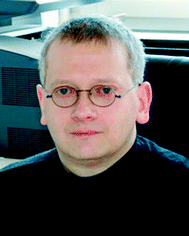Physical chemistry of ionic liquids
 Frank Endres | Frank Endres studied Chemistry at the University of Saarbrücken, Germany, where he received PhD in Physical Chemistry in 1996. He then moved to the University of Karlsruhe where he obtained his habilitation in Physical Chemistry in 2002. In the same year he moved to the Clausthal University of Technology where he was appointed professor in 2003. Today he is professor of interface processes at Clausthal University of Technology and guest professor at the Harbin Institute of Technology, China. His main interests cover ionic liquids, interface processes, electrochemistry and materials science. |
Let’s have a look at the year 1998. At the end of that year, a literature research with the keyword “Ionic Liquid” delivered roughly 50 papers in peer-reviewed journals as a result. The extremely hygroscopic liquids based on AlCl3 that had been known at that time for more than 40 years and which were intensively investigated in the USA were rather found with the keyword “room temperature molten salt” or “ambient temperature molten salt”, mainly for historical reasons. Although liquids with the—more or less—air and water stable anions BF4− and PF6− were presented in 1992 by John Wilkes, one of the pioneers in the field of ionic liquids, only a few papers on such liquids were available in 1998. One reason is surely that such liquids were regarded as a lab curiosity at the time—maybe interesting, but without any practical interest: who needs hygroscopic viscous liquids that cannot even be distilled? Furthermore, only maybe 10–20 groups worldwide worked seriously in the field of ionic liquids. At first glance, it is surprising that these liquids did not represent a separate topic in physical chemistry for a while, and most papers with a physicochemical aspect dealt with electrochemistry to determine electrochemical windows and conductivity. A view of the few available papers shows that there were contradictory results from different groups and the reader might ask the question who is/was right. Today we know that ionic liquids are highly complex solvents where even traces of impurities can create a lot of problems. For BF4− and PF6− it is known, for example, that they are hydrolyzed in water releasing HF and boric and phosphoric acid, respectively. There are multiple other impurities like alkaline ions, halide, silica, alumina, organics and others, which should be determined and declared. A decision whether such impurities have or have not an adverse effect requires a fundamental physicochemical knowledge of ionic liquids. Therefore it is important that the chemical community takes care of the quality of the liquids. One should not expect that ionic liquids all behave in the same manner, and it can easily happen that one sample is perfect, a sample from the same supplier in the same (apparent) quality a few months later might be different, as the supplier has meanwhile changed the production process. The experimenter does not often ask the supplier what the impurity level is and the supplier does not tell the experimenter details of the production process, which from the point of view of the supplier is understandable. For this themed issue we encouraged all authors to declare the quality of the liquid. The aim was to give any reader transparent information to enable others to reproduce the results. Today it is accepted that ionic liquids can not, in most cases, be distilled. This fact, while unfavourable 10 years ago, is now a great advantage for surface chemistry as fundamental processes or properties can be investigated even under ultrahigh vacuum conditions. Furthermore, plasmas can be employed for fundamental investigations, and experiments can be done that were unfeasible in the past. Theory has also made a great step forward during the recent years and the properties of ionic liquids as well as reaction mechanisms can be modelled today. An interesting aspect is that there is now a lot of evidence of ionic liquids being able to influence (physico-)chemical reactions. Slight variations in the ionic structure (or in the purity) can lead to substantial differences, and not all the time bulk properties like viscosity explain the results. Solvation layers can play a big role in interface chemistry and the community starts to understand the quite complex electrochemical double layer which can vary from liquid to liquid. This themed issue not only gives a state-of-the art insight into the fascinating physical chemistry of ionic liquids (although it can only be a snapshot of all activities), it also shows that surely not all ionic liquids behave in the same way. This opens up a lot of potential for fundamentals and applications but also delivers a lot of challenges if slight variations in the ion structure might alter the reactions. This aspect is in its infancy and will surely be a topic of interest in the forthcoming years.
Frank Endres (Guest Editor), Clausthal University of Technology, Germany.
| This journal is © the Owner Societies 2010 |
